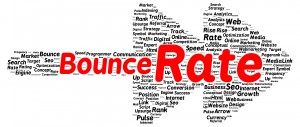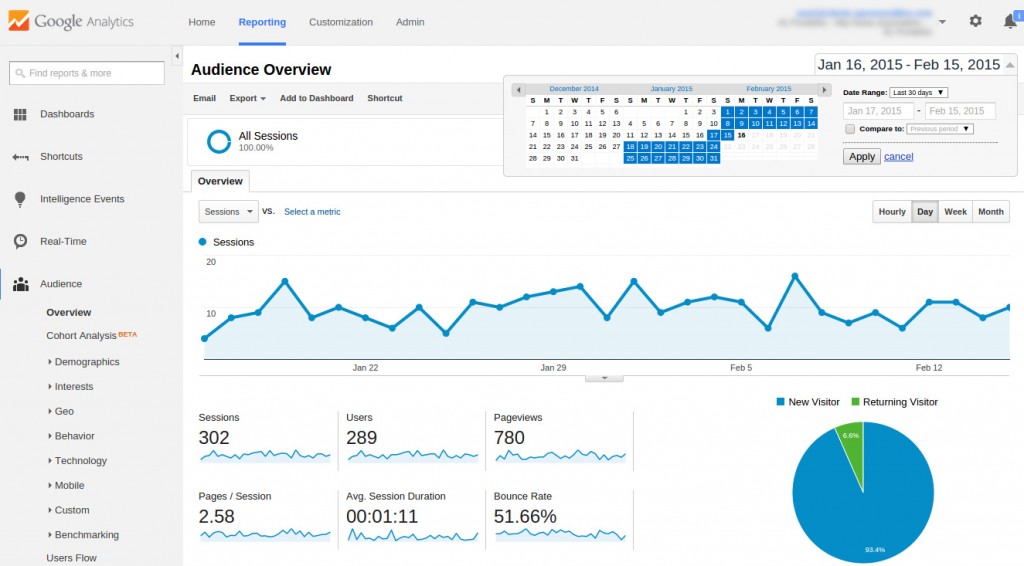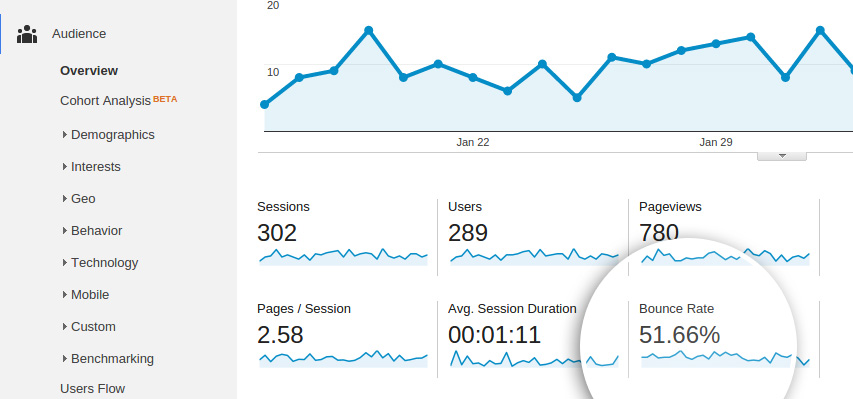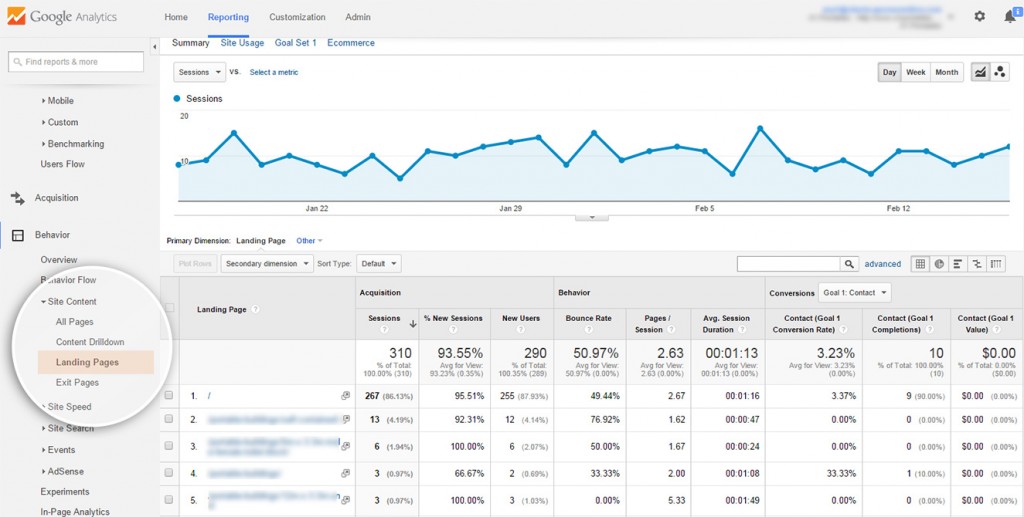Reducing Bounce Rate to Increase Website Engagement – Part I
There is so much to cover when it comes to what you can to do reduce your website’s bounce rate. So much that this topic has been sectioned into three parts so that it’s easier to digest! Part I takes a look at what exactly a ‘bounce rate’ is and, how poor Calls-to-Action and poor navigation can hinder it.
A ‘Bounce Rate’ is a percentage that relates to the number of people who leave your website without looking at more than 1 page.
If people are landing on your website, then leaving without completing any other interaction it’s usually because of 2 factors:
- Either the search term used to find your website was not actually related to what you do, or
- The user was not interested in the information provided or the way the information was presented
If we can reduce the website bounce rate, it means we are becoming more relevant to the user, and we are sparking their interest. A lower bounce rate can certainly give way to better conversion rates, so it’s an important metric to stay on top of.
First things first: check that your website is actually getting traffic. I know it sounds silly, but if you aren’t sending enough traffic to your website then it’s likely we won’t have enough data to make informed decisions. It almost means that if we make some changes to the website it’s going to take a long time to be able to evaluate the effectiveness of those changes.
I would say that getting at least 100 users in a month would be enough data to evaluate, any less than that you and you should consider investing some money in traffic generation first.
Users for the last 30 days is 289
Check how many users you have in the last 30 days by going to the ‘Audience Overview’ section of analytics.
From the Audience Overview section, take a look at your sites overall Bounce Rate. In my experience anything under 50% for a service industry would be an acceptable bounce rate, while around 30% would be great. Usually E-commerce websites will experience a higher bounce rate.
We need to drill down into the landing page list to see which landing pages are hurting us the most. To do this you need to go to the ‘Behaviour’ section of analytics then click on ‘Site Content’ then ‘Landing Pages’.
These are the pages that people are seeing on their first visit to your website, so it’s very important to make a strong impression on these pages. It is pretty typical that most people will be visiting your homepage first, especially if you don’t use AdWords to send traffic to specific pages.
In this case we have 86% of people visiting the homepage first, with a 50% bounce rate. The next most popular landing page is getting only 4% of visits and a 75% bounce rate. It’s clear to see that we need to focus on keeping the traffic generated by the homepage on your website.
It’s important to note that every website and business is different, and there are a many factors that could be affecting your bounce rate, so there are no ‘magic bullets’ to fixing a poor bounce rate, but you should at least consider some of the following reasons for increased bouncers:
Poor Calls to Action
‘Calls to Action’ include any section of the webpage which stands out and asks the user to do something. This is one of the easiest ways to decrease your bounce rate.
Test some different ‘Call to Action’ messages which lead users to other important pages of your website. The more interesting the Call to Action the better. Instead of using “Find out more” buttons try using something catchier like “Learn more about saving time with X service”. If it’s important, make it stand out more.
Just make sure that the calls to action you are using on each landing page fit in with the page the user is on and creates a logical path for a user to take. From the homepage it might be leading users to read more information about your core service, while the service page might try and attract users to a contact page or ‘about us’ page.
Poor Navigation
If potential customers can’t use your navigation they won’t be able to use your website. Make sure your navigation is easy to find, easy to read and structured correctly with your key pages in the most prominent positions of your menu.
Don’t make your drop down menus so small that one wrong mouse move makes the menu disappear or buttons that only work when you click on the actual text instead of the button itself. It’s these small things that can put off a potential customer continuing on through your website.
So as your first keys steps, always ensure that you’re keeping an eye on the bounce rate of your site and that your Calls-to-Action stand out and attract attention. In the next blog we’ll be looking at an array of further steps you can perform, from targeting your target audience to your Unique Selling Position (USP).





